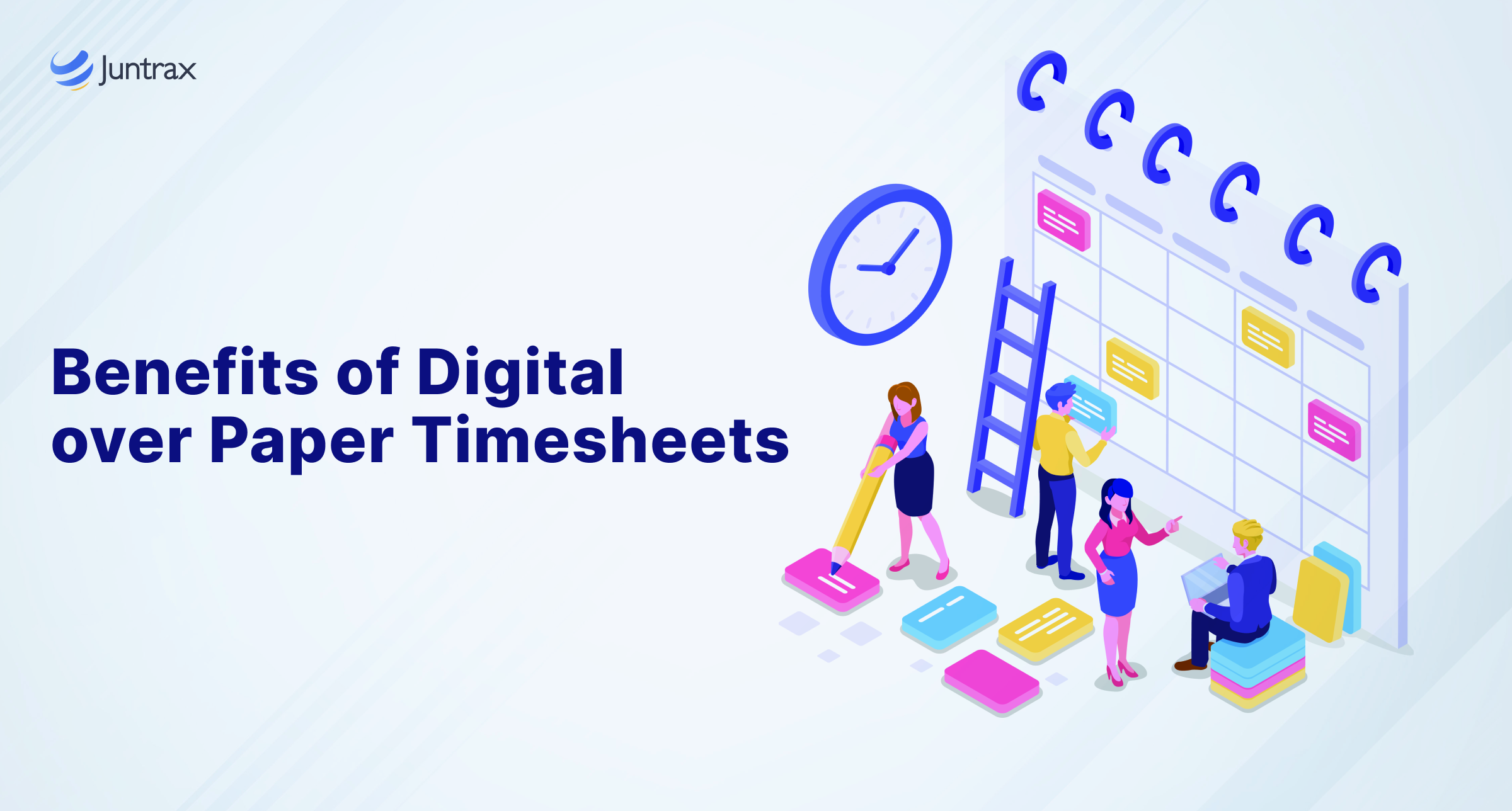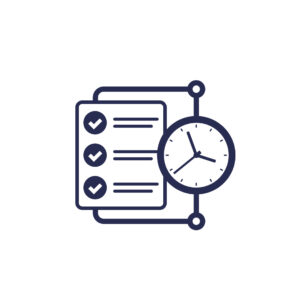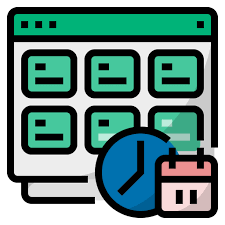Benefits of Digital Timesheets Over Paper


The debate between traditional paper timesheets and their digital counterparts continues in today’s digital era. However, transitioning from paper to digital brings various advantages, significantly impacting business efficiency. From eliminating errors to enhancing accessibility, the benefits are compelling.
Let’s delve into the advantages of digital timesheets and explore how embracing technology like Juntrax revolutionizes this essential aspect of business management.
1. Accuracy and Error Reduction:
– Paper Timesheet Errors: Discuss the inherent issues with paper timesheets, such as manual data entry mistakes leading to calculation errors, lost or damaged physical records, and the risk of inaccurate time tracking.
– Digital Timesheet Solutions: Explain how digital timesheets implemented by solutions like Juntrax offer automated calculations, eliminating manual input errors. Real-time data syncing ensures updated and accurate information. Additionally, validation checks help identify and rectify discrepancies promptly, maintaining data integrity.
2. Accessibility and Convenience:
– Paper vs. Digital Accessibility: Highlight the challenges remote or distributed teams face with paper timesheets, including delays in submitting records due to physical distance and accessibility limitations.
– Advantages of Digital Accessibility: Elaborate on the Convenience of digital timesheets accessible via web or mobile devices. Employees can log their hours or tasks from anywhere, ensuring timely submissions and approvals regardless of location. This accessibility fosters flexibility in work arrangements.
3. Efficiency and Time Savings:
– Inefficiencies in Paper-Based Systems: Discuss the inefficiencies inherent in manual paper-based processes, such as time-consuming data entry, physical circulation of timesheets for approvals, and the potential for lost or delayed records.
– Streamlined Workflow with Digital Timesheets: Explain how digital timesheets automate workflows, minimizing manual intervention. They offer features like automated reminders, approval workflows, and centralized data storage. These streamline processes significantly, reducing the time spent on administrative tasks and enhancing overall productivity.
The most significant issues with paper timesheets and punch cards
They cover too broad of a period
While two-week timesheets are expected, you only see a small detail about an individual’s workday. What you get are digits and some bare-bones information.
This is fine if you’re at a job that emphasizes your presence so that others don’t rely on your work or if you supply timesheets to accounting to estimate your payroll.
There’s more room for human error and exploitation
When timesheets are filled out by hand and count solely on noting down time, there are several openings for issues:
- A person’s handwriting is indistinct;
- The way they round up time is wrong, compromising the time entrances;
- They fill out the fields incorrectly;
- Calculating payroll requires more focus since slip-ups are more unrestricted to make;
- A person can forget or purposefully overlook writing down a task or a break.
With paper timesheets, there will always be a way to cheat the system. In one of my old workplaces, we didn’t fill out timesheets as such, but we did have company ID card readers at the central and back door (where we had our breaks). These card readers would unlock the door, so the system would know when you entered and left the building (started and ended your workday and when you took breaks).
The story’s moral is that some people will find ways to skirt the rules, and outdated timekeeping systems make it much easier for them while they suffer losses.
Additional work for other departments
For managers and team leads, paper timesheets can be a nightmarish archive to go through when they have to make project assessments or check how their teams are faring overall. And bare-bones information like when they entered and exited the building will only help a little. For them, time entries with more detail and collective timesheets are much more helpful.
For accountants, a timesheet like the one in our example saves time, as the person has already calculated their payroll. However, it’s safe to guess that the accountant will go through the math again to ensure everything is by the book. Not to mention inputting the same data in their software or books. This doubles the work and unnecessarily so.
A timesheet like this disadvantages freelancers. Clients often ask for a breakdown of their processes and deadlines. While freelancers give as little information as they want, much trust relies on transparency. It is invaluable to show your client how much time you spend per day on each part of their project. It builds a better understanding and helps you justify your rates.
Why we need digital timesheets
This section will focus on the multiple advantages of digital timesheets for your business. By the end of the list, you’ll see how vital a single piece of software can become.
Digital timesheets let you edit timesheets and time entries.
With a digital timesheet, editing the depiction of each time entry is possible. This is perfect for adding details about the task related to that entry—details like the tools used, who assigned the task, etc.
While you can argue that the identical is available on a paper timesheet, there are always issues of illegibility and people punching in or filling in for their coworkers (risk of time theft). But with a digital time tracker and timesheet, you get three solutions to these problems:
- It’s more manageable to delete and fix a time entry digitally than it is on paper;
- Each employee has their login credentials, so they can’t write up time for each other, and
- Employers can lock the editing choice in the software itself. This means the employees will require approval before revising a time entry, which is excellent for controlling time theft.
By adopting digital timesheets like those offered by Juntrax, businesses can overcome the limitations of traditional paper-based systems. The shift to digital resolves existing challenges and optimizes accuracy, accessibility, and working efficiency, finally bestowing to a more agile and productive work environment.
Conclusion
In conclusion, the benefits of digital timesheets over paper are undeniable. Juntrax, as a complete digital solution, offers many advantages in terms of accuracy, accessibility, and efficiency. Adopting Juntrax’s digital timesheet management empowers businesses to eradicate manual errors, enhance accessibility, and boost overall efficiency, contributing to streamlined operations and improved productivity. To know more, please read our blog on Timesheet: A Smart Way To Log and Track Time!
